Why is Having a Personal Website Essential Today?

In the current digital age, where online identity is as important as your physical identity, designing a personal website is no longer a luxury option, but a necessity.
A personal website allows you to professionally and purposefully introduce yourself, your skills, experiences, and achievements to the world.
This dedicated platform is your storefront in the virtual space, and unlike social networks which are under the control of other platforms and whose rules and algorithms may change, you have complete control over it.
You can tell your story the way you want, without limitations on format or content.
This website can function as a dynamic online resume, an artistic portfolio, a specialized blog, or even a small store for your products or services.
One of the most important advantages of having a personal website is creating a strong and distinct personal brand.
In a competitive market, having a dedicated space that showcases all professional dimensions and even a part of your personality can set you apart from competitors.
For example, a freelancer can display their portfolio in the best possible way, an artist can interactively present their gallery of works, and an expert can share their knowledge and experiences through articles and tutorials.
This not only helps increase your credibility but also provides new opportunities for collaboration, attracting clients, or even securing employment in the best positions.
Furthermore, a personal website is a powerful tool for networking and connecting with like-minded and professional individuals in your field.
Visitors can easily contact you, share their opinions, and thus, constructive relationships can form.
These connections can lead to valuable collaborations, new projects, or even dream job opportunities.
Ultimately, having a personal website means having a digital command center for your online identity that manages all your content and communications under a single umbrella, allowing you to have a strong, stable, and effective presence in the virtual space.
This is the first step towards building a professional platform that will help you in the long run.
Does your current corporate website present a worthy image of your brand and attract new customers?
If not, turn this challenge into an opportunity with RasaWeb’s professional corporate website design services.
✅ Significantly improves your brand’s credibility and image.
✅ Paves the way for attracting new leads and customers.
⚡ For a free and specialized consultation, contact RasaWeb now!
Defining Goals and Identifying the Audience for Your Website
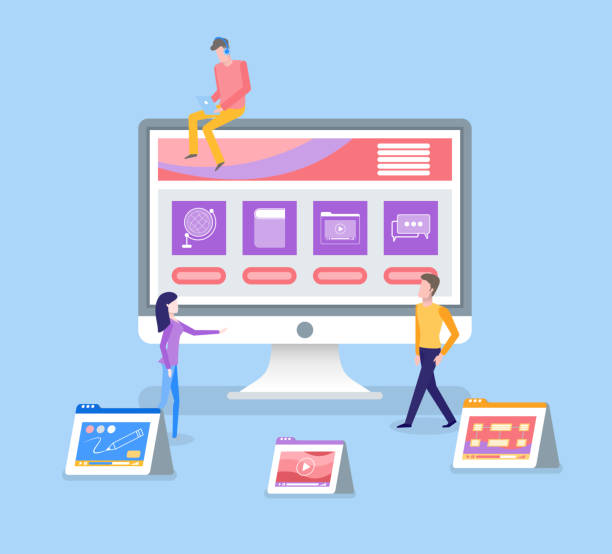
Before taking any action to design a personal website, it is necessary to carefully define your goals and identify your target audience.
This initial and vital step will be the cornerstone of your website’s success and will help you embark on a clear and purposeful path.
Ask yourself: “What is my main goal for having this website?” Do you intend to be recognized as an expert in a specific field? Do you want to showcase your portfolio to attract new clients? Are you looking to share your knowledge and experiences through a blog? Or perhaps you want to create a platform for selling your products or services? The answers to these questions will help you determine the type of content, structure, and even the appearance of your website.
After defining your goals, it’s time to identify your audience.
This stage is incredibly important because your website’s content and design should be appealing and useful to your target audience.
What are the age, gender, interests, knowledge level, and even problems and needs of your potential audience? For example, if your website is for attracting employers, it should have a professional and formal appearance and include your resume and portfolio.
But if your website is for sharing travel experiences, you can use more engaging designs and entertaining content.
Precisely knowing your audience helps you choose an appropriate language for communication and produce content that truly addresses their needs.
This stage not only helps you in choosing the appropriate Content Management System (CMS) and tools but also plays a key role in your website’s marketing strategy and SEO.
For instance, if your audience primarily accesses the internet via mobile devices, responsive design for your website will be of high importance.
This planned approach not only optimizes your time and cost expenditure but also significantly increases the likelihood of your website’s success in attracting an audience and achieving pre-defined goals.
Therefore, before any coding or graphic design, dedicate sufficient time to this crucial stage.
Choosing the Right Platform and Tools for Personal Website Design

In the next step for designing a personal website, choosing the right platform and tools is extremely important.
This choice should be based on your goals, budget, and technical knowledge.
There are numerous options for building a website, each with its own advantages and disadvantages.
One of the most popular and flexible options is using Content Management Systems (CMS) like WordPress.
WordPress, due to its ease of use, wide range of plugins and themes, and large user community, is the first choice for many people, even without coding knowledge.
You can use it to set up various types of websites, including blogs, portfolios, or even small online stores.
Other website building platforms like Wix, Squarespace, and Weebly are also good options, especially for users looking for entirely visual solutions with minimal technical knowledge required.
These platforms typically offer drag-and-drop functionalities that greatly simplify the design process.
However, they might have limitations in terms of flexibility and full control over the code.
The choice between these options depends on your specific needs.
If you are looking for complete control and high extensibility capabilities, WordPress or even manual coding (for developers) is more suitable, but if speed and ease of setup are your priority, website builder platforms are a better choice.
Don’t forget that choosing a suitable domain name and reliable hosting is also an inseparable part of this stage.
Your domain name should be short, memorable, and relevant to your name or brand to be easily registered in the minds of your audience.
Hosting is also the space where your website files are stored, and its quality directly affects your website’s loading speed and stability.
Researching reputable hosting companies and choosing a plan that matches your website’s anticipated traffic is highly important.
The table below provides a comparison between some of the most common platforms:
| Platform | Advantages | Disadvantages | Required Technical Knowledge Level |
|---|---|---|---|
| WordPress | High flexibility, diverse plugins, large user community, SEO friendly | Requires hosting and security management, initial learning curve | Medium to High |
| Wix | Easy to use (Drag-and-Drop), beautiful ready-made templates, integrated hosting and security | Limited site transfer, less code control, more challenging SEO | Low |
| Squarespace | Stylish and professional templates, good support, integrated hosting and security | Fewer customization options than WordPress, higher price | Low to Medium |
Principles of Effective Design and User Experience (UI/UX)

After choosing the platform, it’s time for one of the most important aspects of personal website design: effective design and user experience (UI/UX).
Visual design (UI – User Interface) and user experience (UX – User Experience) are two inseparable concepts that determine a website’s success.
A beautiful and eye-catching website without a good user experience will drive visitors away, and conversely, a website with excellent usability but a messy appearance will not look professional.
The main goal at this stage is to create a space that is both visually appealing and allows visitors to easily navigate and access the information they need.
In UI design, attention is paid to factors such as color selection, fonts, images, and graphic elements.
Choosing a suitable color palette that aligns with your personal brand, using readable and understandable fonts, and utilizing high-quality and relevant images all contribute to the beauty and professionalism of your website.
In this regard, the layout of elements and whitespace are also highly important to prevent the website from looking cluttered and confusing.
Focusing on creating a unified visual identity helps your website to be memorable to the audience.
In the UX section, the focus is on user interaction with the website.
Is your website easy to navigate? Are the menus logically categorized? Are the contact forms simple and functional? Page loading speed, compatibility with various devices (responsiveness), and providing appropriate feedback to the user (e.g., when submitting a form) are all factors that influence user experience.
A good user experience makes visitors stay longer on your website, view more pages, and ultimately get closer to your goal (whether it’s purchasing, contacting, or following content).
For example, Call-to-Action buttons should be clearly visible and guide users towards your desired action.
By adhering to these principles, you can create a website that is not only beautiful but also enjoyable and efficient for visitors.
This investment in design will ultimately lead to an increase in traffic and credibility for you.
Did you know that poor online store design can drive away up to 70% of your potential customers? RasaWeb revolutionizes your sales with professional and user-friendly e-commerce website design.
✅ Significant increase in sales and revenue
✅ Full optimization for search engines and mobile
⚡ [Get a free consultation from RasaWeb]
Strategy for Producing Engaging and Useful Content
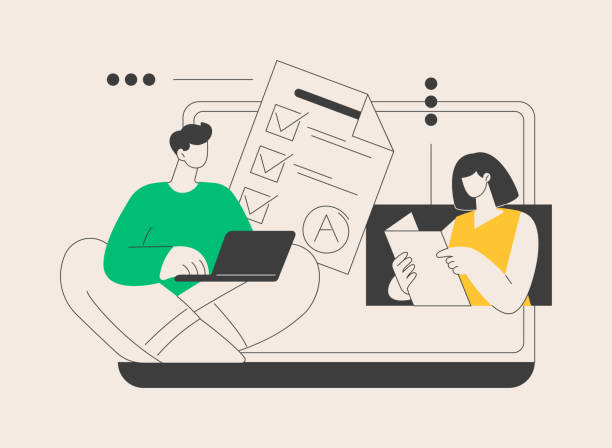
Content is the beating heart of any personal website, and after designing your personal website and preparing the infrastructure, it’s time to produce content that not only attracts the audience but also encourages them to interact and stay on the site.
Your content strategy should be shaped based on your goals and audience.
You can offer various types of content on your personal website: blog articles, portfolios, online resumes, an About Me section, contact pages, and even videos and podcasts.
Each of these plays an important role in introducing you and your values.
For example, if you are a graphic designer, a portfolio with high-quality images and detailed descriptions of your projects will be more eloquent than any text.
The key point in content production is providing value.
Your content should be useful, informative, entertaining, or inspiring for visitors.
Educational content can include step-by-step tutorials, guides, or analytical articles.
Analytical content can showcase your in-depth perspectives on specific issues in your field.
To maintain appeal, you can use visual elements such as infographics, images, and videos to give your content visual variety and prevent readers from getting bored.
Also, storytelling is a powerful tool; use your personal experiences, challenges, and successes to establish a deeper connection with your audience.
Consistency and regular content updates are also very important.
A website with old and stagnant content loses its appeal.
Planning to produce new content regularly (e.g., weekly or monthly) not only helps maintain audience interest but is also beneficial for your website’s SEO.
Search engines give higher rankings to websites that are regularly updated.
Furthermore, interacting with your audience through the comments section or social networks linked on your website can help you better understand their needs and produce more targeted content.
Ultimately, the originality and uniqueness of your content will distinguish it from competitors and reflect your true identity.
Search Engine Optimization (SEO) for Personal Websites
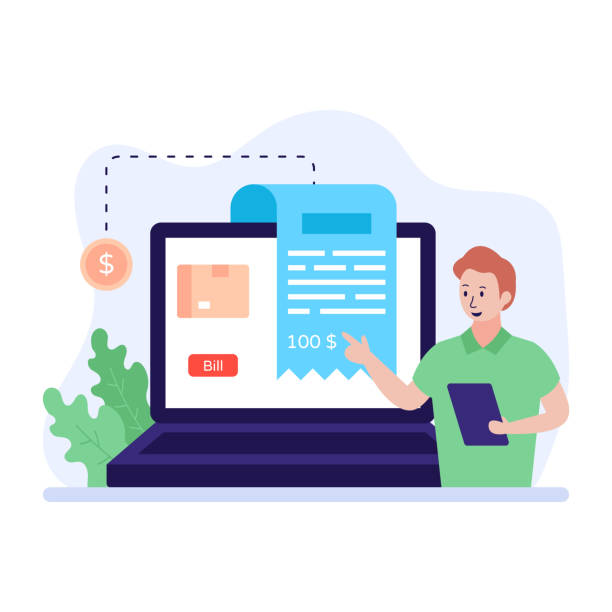
After completing the personal website design stages and producing high-quality content, the next and very crucial step is optimizing the website for search engines, or SEO.
SEO refers to a set of actions that help your website rank better and be more visible in Google’s search results or other search engines.
The importance of SEO for a personal website lies in its ability to help you attract organic (natural) traffic without the need for paid advertising, drawing potential audiences towards you.
Without SEO, even the best content and most beautiful design may never be seen by your target audience.
One of the first steps in SEO is keyword research.
You need to identify the words your target audience searches for on Google to find the services or information you provide.
Use these keywords naturally and logically in your website’s titles, subheadings, content text, meta descriptions, and page URLs.
However, be careful to avoid over-stuffing keywords, as this can be recognized as spam by search engines.
On-Page SEO involves optimizing your website’s content and structure, such as using heading tags (H1, H2, H3), image optimization (using alt tags), creating a proper internal linking structure, and page loading speed.
Off-Page SEO also includes actions taken outside your website to increase its authority, such as acquiring backlinks from other reputable websites.
The more high-quality websites link to your website, the higher your credibility will be in Google’s eyes.
Of course, the quality of links is more important than their quantity.
Creating profiles on social media and linking to your personal website, sharing your content on relevant platforms, and even guest posting (Guest Posting) on other blogs are among the methods to gain backlinks and increase visibility.
Ultimately, SEO is a continuous process that requires constant monitoring and updates so that your website is always well-visible in search results.
By following these tips, SEO can drive significant traffic to your personal website and greatly assist in your brand’s growth.
Website Maintenance, Security, and Updates

After completing the personal website design and launching it, your work doesn’t end; it only begins.
Maintenance, security, and regular website updates are three essential pillars for preserving the health, proper functioning, and stability of your online presence.
A website that is left unattended will not only lose its efficiency over time but may also become vulnerable to cyber attacks.
This is especially important for platforms like WordPress, which are constantly being developed and have many plugins and themes.
One of the most important aspects of maintenance is regular backup of website data.
This ensures that in case of any technical issues, server failure, or hacker attack, you can easily restore your website to its previous state and prevent data loss.
Backups should include website files (such as images, code) and also the database.
Many hosting companies offer automatic backup services, but it’s advisable to also take regular backups yourself, either manually or using dedicated plugins, and store them in a secure location (off-server).
Website security is also of vital importance.
Using strong passwords, regularly updating the CMS core, plugins, and themes, installing a Web Application Firewall (WAF), and an SSL certificate (HTTPS) for data encryption are among the essential security measures.
An SSL certificate is not only important for the security of your visitors’ information but also considered a positive factor for SEO, as search engines give better rankings to HTTPS websites.
Continuous updates are also essential for keeping up with the latest technologies and fixing bugs and potential vulnerabilities.
These updates help your website maintain better speed and performance and ensure full compatibility with new browsers and various devices.
Monitoring website performance with tools like Google Analytics also helps you identify traffic, user behavior, and potential issues, enabling you to take action for improvement.
Below is a table providing a checklist for regular personal website maintenance:
| Activity | Description | Recommended Frequency |
|---|---|---|
| Full Backup | Backing up all website files and database | Weekly or Monthly (depending on content update frequency) |
| Updating Core, Plugins, and Theme | Installing the latest software versions to fix bugs and improve security | As soon as a new version is released |
| Checking Broken Links | Ensuring all internal and external links function correctly | Monthly |
| Security Monitoring | Checking security logs, scanning for malware and vulnerabilities | Weekly |
| Database Optimization | Cleaning up unnecessary data and optimizing database tables | Quarterly |
Branding Strategies and Monetization of Personal Websites
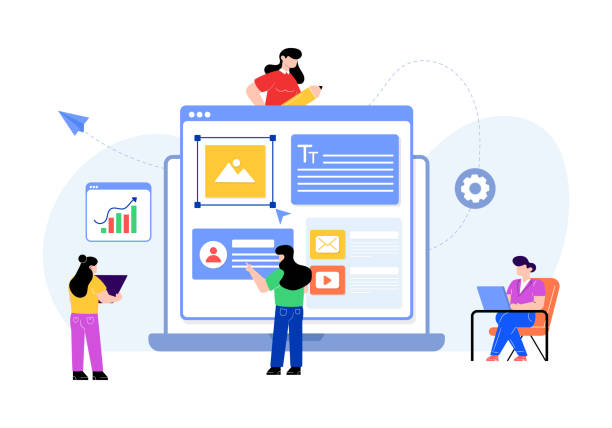
One of the exciting aspects of personal website design is its potential for personal branding and even monetization.
Your website can become a hub for establishing your professional identity and provide a platform for generating economic value.
Personal branding goes beyond a logo or a slogan; it means a set of unique values, skills, and characteristics that distinguish you from others.
A personal website is a powerful tool to showcase this brand and create a positive and lasting impression in the minds of your audience.
For effective branding, you must ensure that your website’s content, design, and tone of voice align with your brand identity.
This includes using a consistent color palette, specific fonts, a unified writing style, and regularly displaying your key messages.
The “About Me” page on your website is a golden opportunity to tell your personal and professional story; use it to showcase your passion, values, and goals.
Regularly publishing high-quality and specialized content in your field also helps solidify your position as an authority and expert.
Regarding monetization, there are several ways to generate income from a personal website, which vary depending on your content and audience:
- Selling Personal Products or Services: If you are an artist, writer, consultant, or coach, you can sell your artworks, e-books, training courses, or consulting services directly through your website.
- Affiliate Marketing: You can promote others’ products or services on your website and receive a commission if a purchase is made through your link.
- Advertising: You can use platforms like Google AdSense to display ads on your website.
Although this method is usually more profitable for high-traffic websites. - Sponsored Content Creation: If your website has credibility and a loyal audience, brands might offer to pay you for creating sponsored content or reviewing their products.
- Premium Content/Membership: You can offer exclusive content, advanced training courses, or access to an online community via subscription or membership fees.
These methods can not only be a source of income for you but also help you have more interaction with your audience and create more value for them.
Are you tired of your e-commerce site having visitors but no sales? RasaWeb solves your main problem with professional e-commerce website design!
✅ Significant sales increase with targeted design
✅ Flawless user experience for your customers
⚡ Get a free consultation!
The Future of Personal Websites and Upcoming Trends

The future of personal website design is undergoing significant changes that will be accompanied by technological advancements.
As new technologies emerge, personal websites are expected to evolve and provide more attractive capabilities for users and creators.
One of the most prominent upcoming trends is the integration of Artificial Intelligence (AI) and Machine Learning.
AI can intelligently personalize the user experience; for example, display more relevant content to users or even provide smart answers to their questions.
Advanced AI-powered chatbots can play the role of virtual assistants on personal websites and facilitate better interaction with visitors.
Voice Search is another trend that should be noted.
With the increasing use of voice assistants like Siri, Google Assistant, and Alexa, optimizing content for voice search will become increasingly important.
This means focusing on long-tail keywords and more natural language in content so that your website also ranks high in voice search results.
Furthermore, Augmented Reality (AR) and Virtual Reality (VR) can offer novel experiences on personal websites; for instance, for displaying artistic portfolios in 3D or providing virtual tours.
Personal websites are expected to move towards greater interactivity and more customization.
This means that users will not only consume content but also play a role in its production or shaping.
Features such as advanced user profiles, online communities within the website, and interactive functionalities like surveys and quizzes will become more prevalent.
The focus on data privacy and security, given new regulations like GDPR, will also become increasingly prominent, and personal websites must ensure transparency and take necessary actions in this regard.
Ultimately, the future of personal websites is moving towards personalized, intelligent, and highly interactive platforms that enable individuals to showcase their digital identity in an unprecedented and engaging way.
The Role of Social Networks alongside Your Personal Website
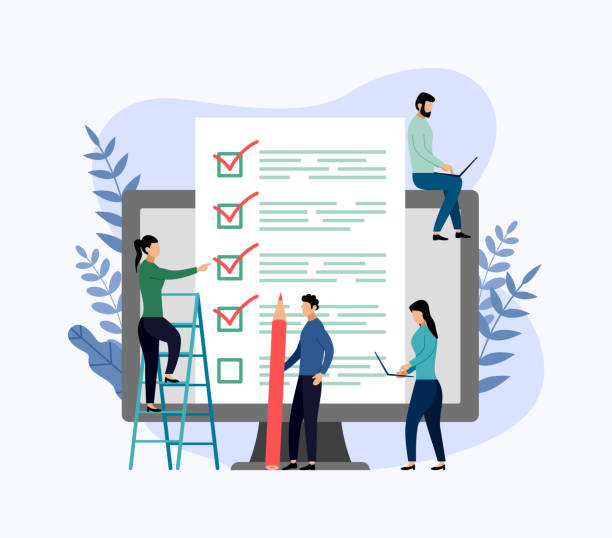
While designing a personal website gives you a dedicated base and full control over your online identity, it’s a mistake to overlook the role of social networks in your digital strategy.
Social networks like Instagram, LinkedIn, Twitter, and Facebook are powerful tools for increasing your website’s visibility, driving traffic, and engaging with your audience.
They act as complements to your website and should not be considered substitutes for it.
Your website is your command center, and social networks are channels for broadcasting your message and directing users to this center.
Smart use of social networks helps you to:
- Increase Brand Awareness: By publishing engaging content relevant to your field, you can introduce your personal brand on social networks and attract new audiences who might never have found your website.
- Drive Traffic: You can share links to your website, new articles, portfolios, or any other important content on your social media profiles and posts to drive traffic to your website.
This is an excellent way to increase organic visitors. - Direct Interaction: Social networks provide a platform for direct interaction with your audience.
You can answer questions, receive feedback, and connect with your community.
These interactions can help you better understand audience needs and produce more targeted content. - Feedback and Analysis: Social platforms offer powerful analytical tools that allow you to monitor your content’s performance and receive valuable feedback.
This information can be effective in optimizing your website’s content strategy.
It’s important to place your website link in the bio or contact information section of all your social profiles.
Additionally, you can include social sharing buttons on your website so visitors can easily share your content on their social networks.
This helps increase your visibility and expand your personal brand.
Remember that each social network has its own audience and content formats, so your strategy for each platform should be different and optimized.
Frequently Asked Questions
| Question | Answer |
|---|---|
| Why should we have a personal website? | A personal website helps you create your personal brand, showcase your skills and portfolio, connect with your audience, and gain new job opportunities. |
| What steps should be taken to design a personal website? | The steps include defining goals, choosing a domain name and hosting, selecting a platform (e.g., WordPress), designing the user interface, content creation, search engine optimization (SEO), and launching. |
| Do I necessarily need to know coding to design a personal website? | No, using Content Management Systems (CMS) like WordPress or Website Builders like Wix and Squarespace, you can design your website without needing to code. |
| What is a Domain Name and how do I choose one? | A domain name is your website’s address on the internet (e.g., yourname.com). It’s best to choose a name that is short, memorable, relevant to you or your business, and has a suitable extension (like .com, .ir). |
| What is Hosting and why do I need it? | Hosting is a space on the internet where all your website’s files and information (such as images, texts, code) are stored so they are always accessible to users. Without hosting, your website will not be visible. |
| What should the content of a personal website include? | Content usually includes an About Me page, portfolio, services/skills, blog (articles), contact information, and a contact form. |
| How can I optimize my personal website for search engines (SEO)? | By using relevant keywords, producing high-quality content, improving website loading speed, being mobile-responsive, building internal and external links, and optimizing title and description tags. |
| Why is Responsive Design important for a personal website? | Responsive design ensures that your website displays correctly on all devices (computers, tablets, mobiles) and provides a good user experience, which is also important for SEO. |
| What should I do for personal website security? | Using an SSL certificate (HTTPS), regularly updating the platform and plugins, using strong passwords, regular backups, and installing a firewall or security plugins. |
| How can I increase traffic (visitors) to my personal website? | Through SEO optimization, content marketing (blogging), social media activity, email marketing, online advertising, and collaboration with other websites. |
And other services of RasaWeb Advertising Agency in the field of advertising
Smart Reportage: A combination of creativity and technology for online growth through custom programming.
Smart Website Development: A blend of creativity and technology for campaign management driven by SEO content strategy.
Smart Data Analysis: A specialized service for increasing website traffic based on marketing automation.
Smart Link Building: A professional solution for digital branding with a focus on precise audience targeting.
Smart Data Analysis: A specialized service for increasing website traffic based on intelligent data analysis.
And over a hundred other services in the field of internet advertising, advertising consultation, and organizational solutions
Internet Advertising | Advertising Strategy | Advertorials
Resources
- Comprehensive Guide to Building a Personal Website
- How to Build a Professional Personal Website?
- Key Tips for Personal Website Design
- The Importance of Online Identity and Personal Branding
? Is your business ready for a big leap in the digital world? RasaWeb Afarin Digital Marketing Agency, specializing in professional website design and offering comprehensive online marketing solutions, paves your way to growth and visibility.
📍 Tehran, Mirdamad Street, next to Bank Markazi, Southern Kazeroon Alley, Ramin Alley, No. 6



